The historic Lindesnes lighthouse marks the southernmost point in Norway. Come take a tour with us.
At the very tip of mainland Norway, where the North Sea meets the Skagerrak strait, stands Lindesnes Lighthouse, a lonely sentinel in an area battered by waves, wind, and history.
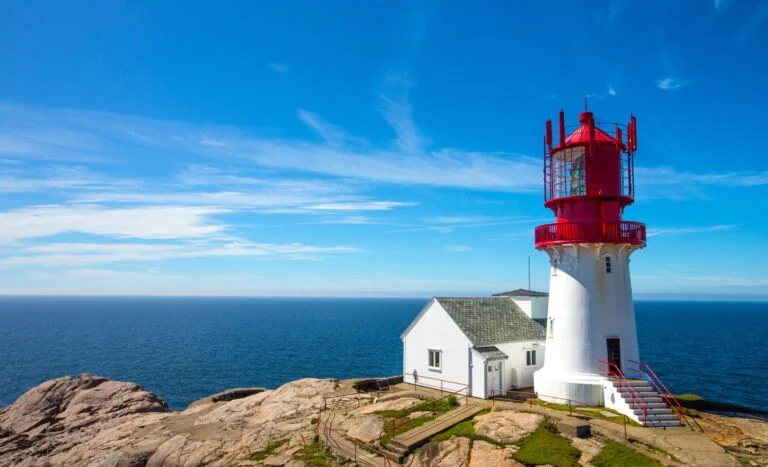
This dramatic location isn’t just the southernmost point of Norway, but also one of the country’s most iconic maritime landmarks.
With a lighthouse on the site since the 17th century, Lindesnes has long played a vital role in guiding ships entering the Baltic Sea.
Today, it’s a fascinating destination for travellers interested in coastal landscapes, seafaring history, and the sheer romance of lighthouses.
Table of Contents
Where is Lindesnes?
Lindesnes is a municipality in Agder county in Southern Norway. It covers Norway’s southern tip and has a population of around 23,000. Most residents live in and around Mandal, a coastal town that serves as a great base for exploring the area.
Lindesnes lighthouse itself is located about 40 kilometres west of Mandal, and roughly 10 kilometres southwest of the small village of Høllen.
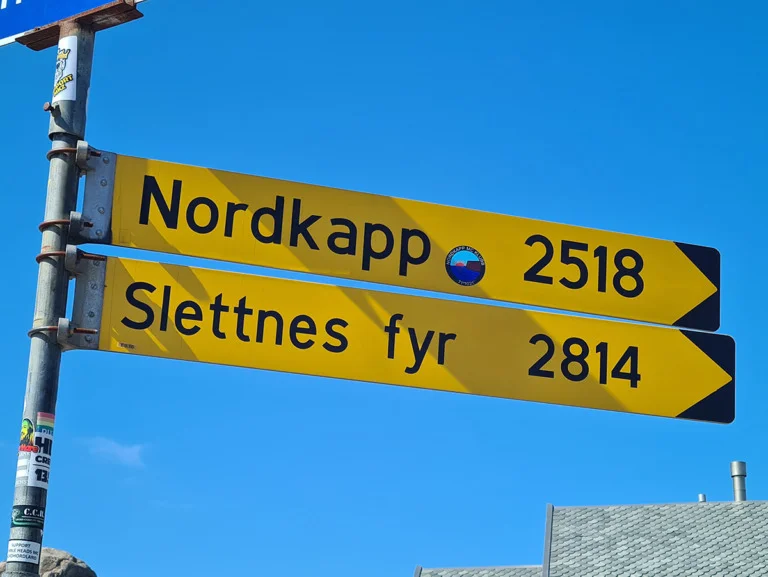
It sits on a craggy promontory jutting into the sea, surrounded by the windswept coastline that characterises this part of Norway.
A signpost near the lighthouse marks the distance to Nordkapp (North Cape), Norway’s northernmost point accessible by car, as well as to Slettnes Lighthouse near Gamvik, which is the northernmost lighthouse on the Norwegian mainland.
It’s a visual reminder of Norway’s extraordinary length and diverse coastal geography.
A Lighthouse With a Long History
The current lighthouse building dates from 1915, but Lindesnes has hosted beacons since 1656.
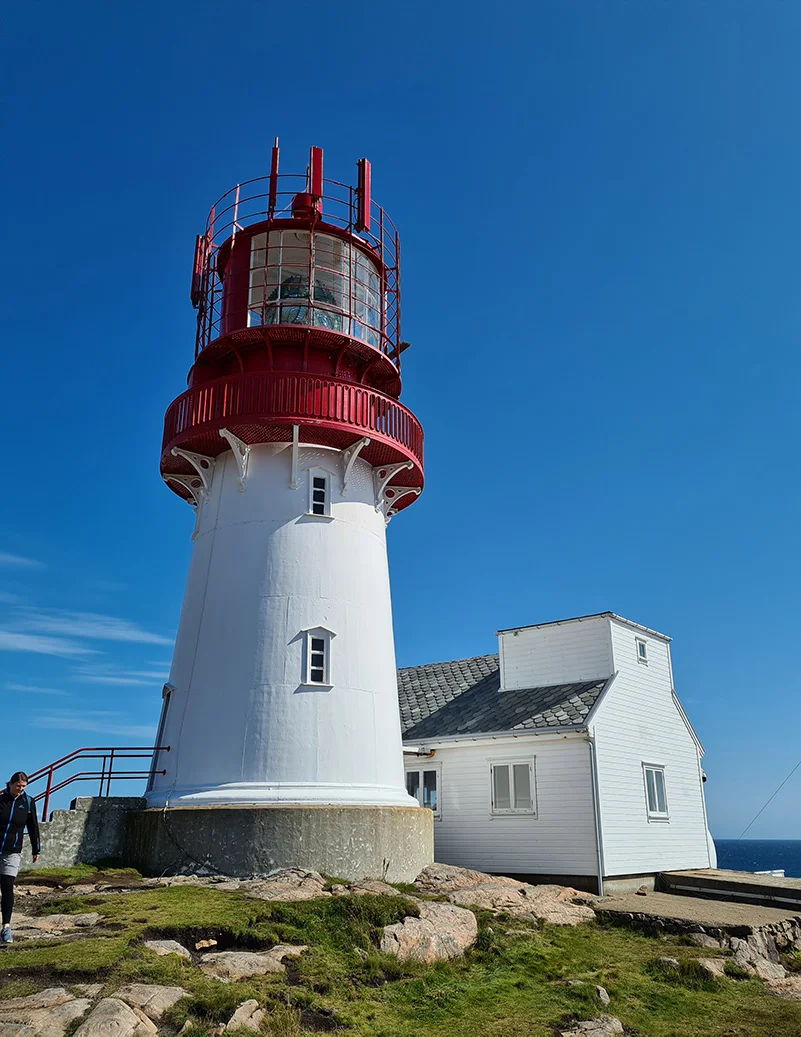
It was Norway’s very first lighthouse, a recognition of its importance for ships navigating the hazardous waters between the North Sea and the Skagerrak strait.
Earlier versions were far less advanced, including simple coal-fired lights. These early structures were often short-lived due to poor performance or harsh conditions.
Over the centuries, as shipping increased and maritime technology improved, Lindesnes evolved into the robust, cast-iron tower that stands today.
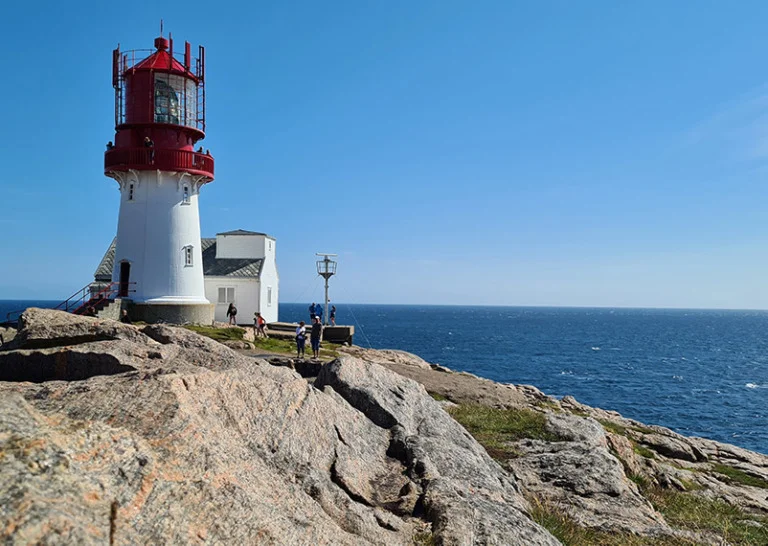
Painted bright white with a red lantern dome, the lighthouse is a photogenic structure, especially when framed against blue skies or the crashing waves of the open sea.
The Light Itself
The current beacon uses a powerful Fresnel lens mounted 50.1 metres above sea level. It emits a flashing white light with a cycle of 20 seconds, visible from up to 17.7 nautical miles (around 33 kilometres) on a clear night.
This light continues to serve as an active navigational aid, although the lighthouse is now automated. For centuries, however, it was manned year-round, and the former keeper’s cottages, sheds, and boathouses can still be seen nearby.
Inside the Lighthouse
Visitors can explore inside the lighthouse, climbing the narrow staircases to reach the viewing platform just beneath the beacon.
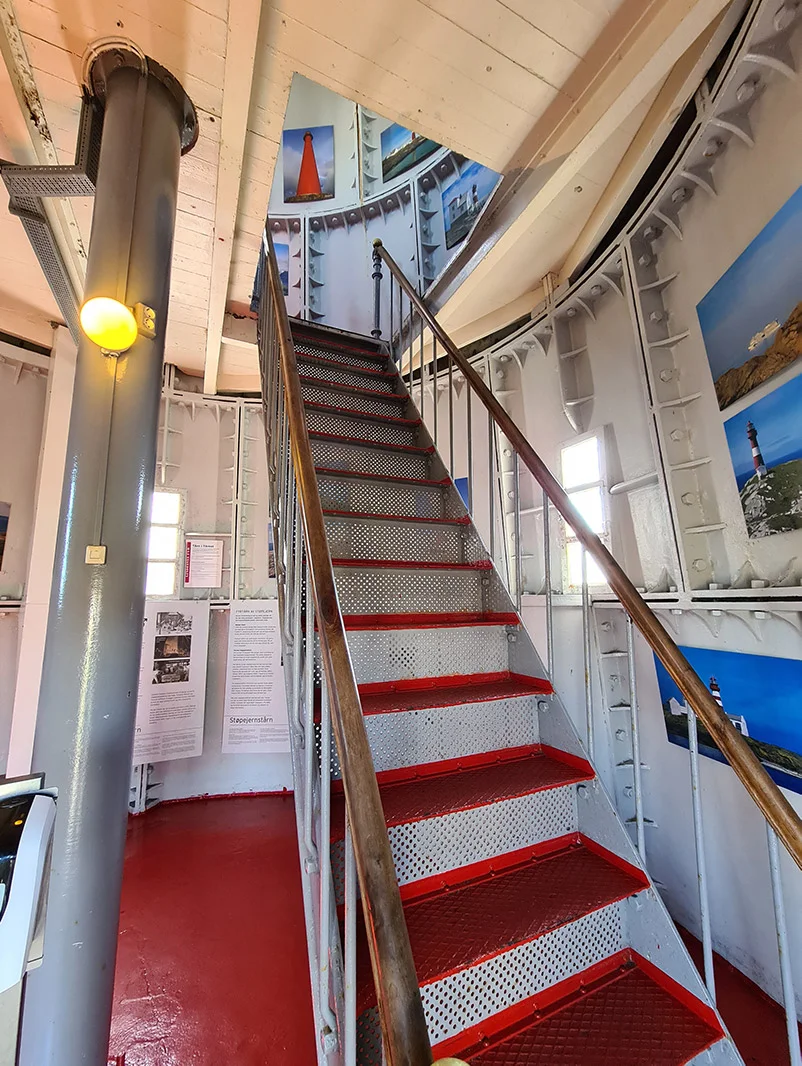
Along the way, exhibitions provide insight into the life of a lighthouse keeper and the development of navigational aids in Norway.
There’s also a collection of photographs and displays about other notable Norwegian lighthouses, offering a sense of just how important these beacons were in a country with such an extensive, rugged coastline.
Panoramic Views and Coastal Weather
Although the lighthouse structure isn’t especially tall, its location on a rocky outcrop offers exceptional views over the sea and surrounding coastline.
On clear days, the endless blue horizon and raw coastal beauty make for an unforgettable experience.
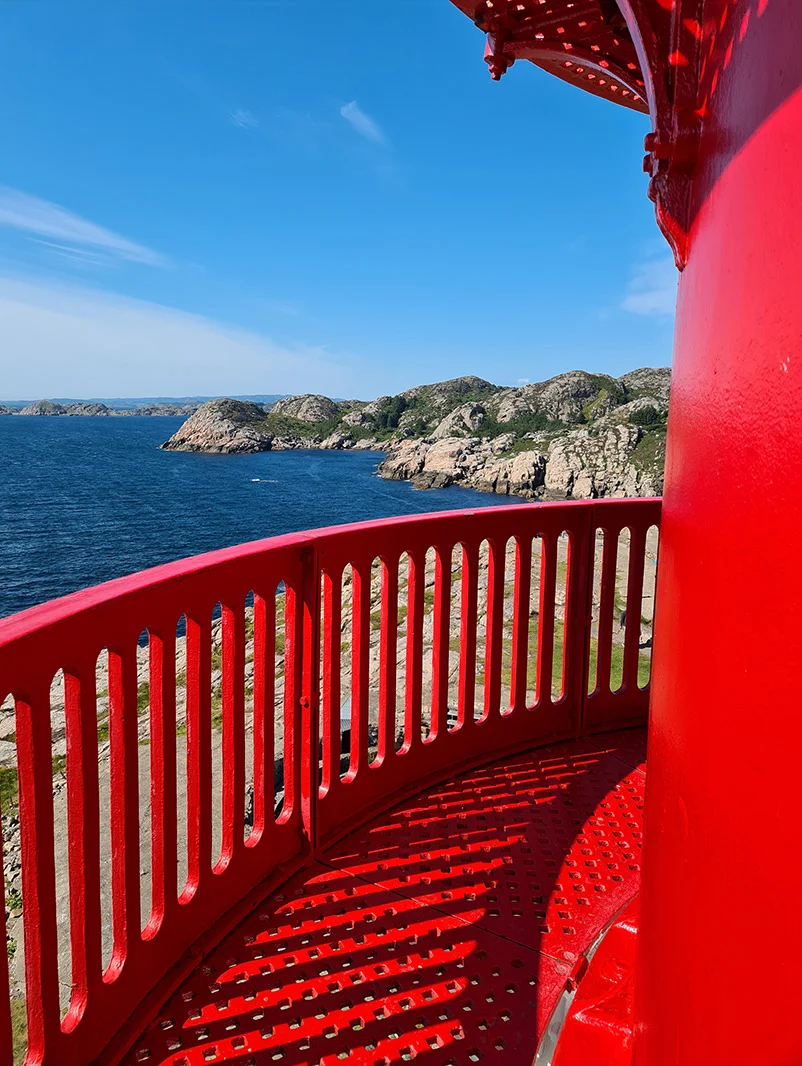
Southern Norway enjoys a relatively mild climate compared to the rest of the country. Lindesnes has recorded weather data since 1863, and even in the depths of winter, average temperatures rarely dip far below freezing.
This makes it a year-round destination for those curious enough to make the journey.
Lindesnes Lighthouse Museum
A highlight of any visit is the museum complex built into the nearby rocks. Opened as part of a millennium project by Agder County, the museum presents the history of the lighthouse and the lives of those who kept it running through the centuries.
Inside, you’ll find historic equipment, maritime artefacts, and a preserved beacon, as well as short films about the lighthouse’s past and its enduring role in Norwegian coastal heritage.
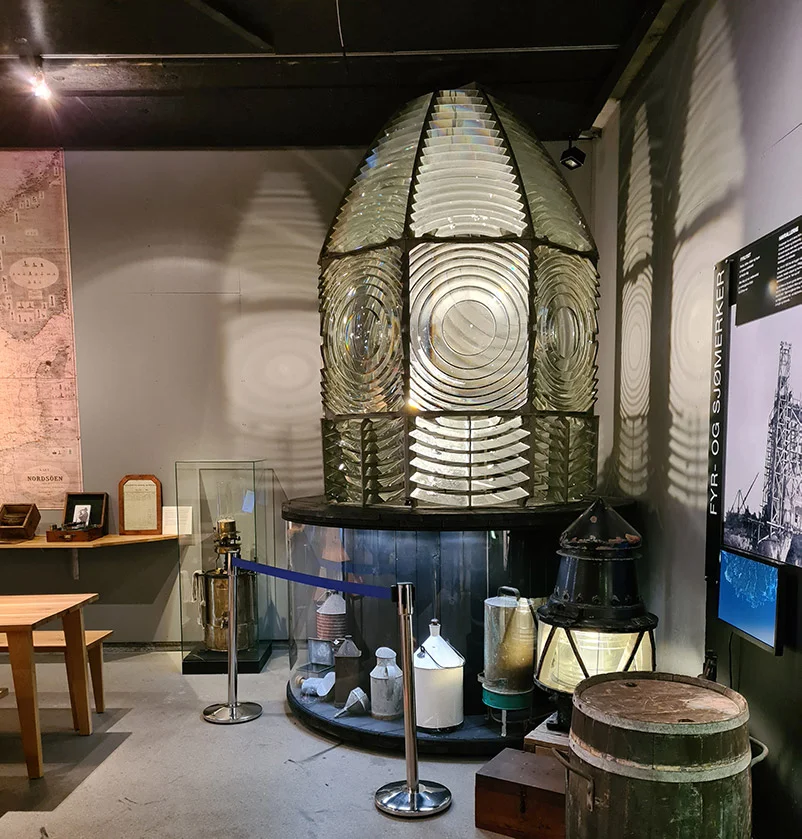
Part of the complex includes Fjellhallen, an underground hall carved directly into the rock. This atmospheric space is used for concerts, theatre performances, and cultural events throughout the year.
Wartime History of Lindesnes Lighthouse
Like many strategic coastal locations in Norway, Lindesnes played a role during the Second World War. When German forces occupied Norway in 1940, they quickly took control of the lighthouse due to its critical position overlooking the Skagerrak.
The site was fortified with bunkers, trenches, and rock tunnels—many of which remain visible today. These defences turned Lindesnes into a coastal lookout and part of the German Atlantic Wall defences.
Tragically, wartime violence reached these waters. In July 1944, a British B-24 Liberator aircraft sank the German submarine U-319 southwest of Lindesnes. All 50 crew members on board perished.
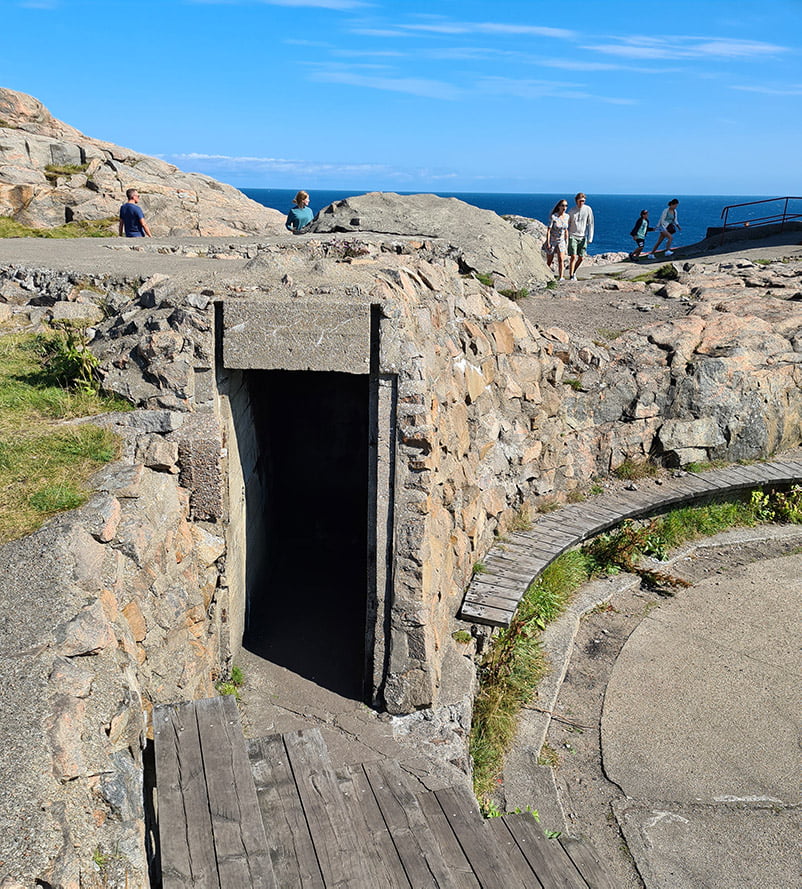
It’s a reminder of the turbulent history that unfolded even in this seemingly peaceful corner of the country.
Getting to Lindesnes and What to Expect
Lindesnes is best reached by car, making it an ideal stop on a Southern Norway road trip. From Kristiansand, the drive takes around 90 minutes. The journey itself is part of the experience, with winding roads leading through charming coastal villages, stretches of dense forest, and sweeping views of the sea.
For international visitors, Kristiansand is also served by regular ferry connections from Hirtshals in northern Denmark, making it a convenient entry point for those arriving by car from mainland Europe.
Public transport connections to the lighthouse are limited, especially outside the summer season.
However, during peak travel months, some regional buses run from Mandal or Vigeland to nearby villages, though you’ll likely still need a taxi or bike for the final stretch. For full flexibility, a rental car is strongly recommended.
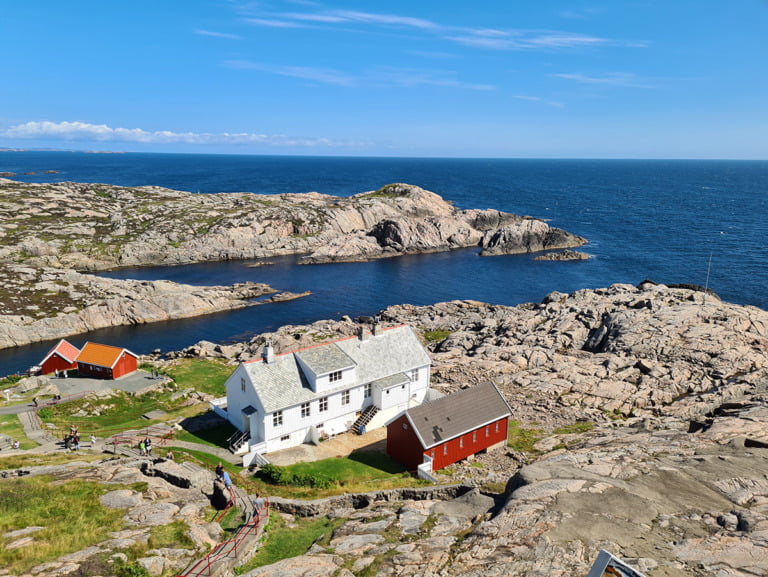
The lighthouse is open to visitors year-round, though opening hours vary by season. Summer months offer extended hours, often with guided tours and occasional events.
In winter, access is more limited, but the dramatic scenery is often enhanced by moody skies and crashing waves, making the experience more memorable.
There is a small admission fee that grants access to the museum, lighthouse tower, and exhibitions. Tickets can be purchased on arrival, and combination passes may be available during special events or exhibitions.
Facilities include a cosy café housed in one of the old buildings near the entrance. It serves coffee, cakes, and light snacks with views of the sea. A well-stocked gift shop offers maritime books, lighthouse-themed souvenirs, and locally made crafts and preserves.
For those who want to linger longer, there are accommodation options nearby, including guesthouses and seaside cabins.
In recent years, Lindesnes has also become known for Under, the acclaimed underwater restaurant located a short drive away in Båly, offering the possibility of combining history, scenery, and cutting-edge dining in a single trip.


A bit of advice from an Englishman who used to live in Southern Norway for a while and married a Sorland’s jenta. Although, as Mr Nikkel said in the article, the lighthouse is best photographed against a blue sky, the best time to visit the lighthouse and surrounding area is when there is stormy weather. The stormy sea smashing against the rocks is a very dramatic scene. Lindesness Lighthouse is the most southern lighthouse on the Norwegian mainland, and although this oft repeated fact hints a lighthouse on an island further south, I do not know where it is, if it is there at all.
I Love light houses…
I’ve seen/visited many of them on the US east coast. None can impress more than this one does.